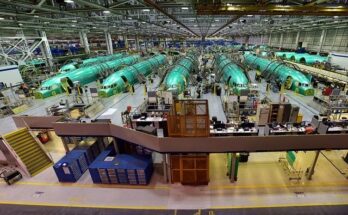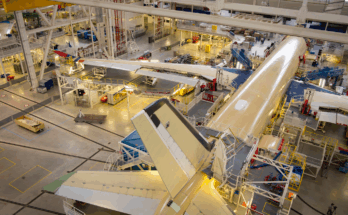
The much-awaited Boeing Starliner (CST-100) mission, Boeing Crew Flight Test (Boe-CFT), was scrubbed on the night of May 6 due to a valve issue on the Lockheed Martin Centaur upper stage. The next attempt, originally set for around May 10, has been pushed to May 17 at the earliest. The Centaur is not a new piece of kit and is well-proven with early variants first launching in the 1960s. The Centaur was atop United Launch Alliance’s (ULA) Atlas V rocket, another proven piece of technology.
Lockheed Martin developed the Atlas V heavy-lift booster for the USAF’s Evolved Expendable Launch Vehicle program (now National Security Space Launch NSSL program). The vehicle features a number of common elements, including the 3.8-meter-diameter by 27.15-meter-tall Common Core Booster (CCB), a propulsion system powered by an RD-180 engine, a Centaur upper stage, standard commercial payload adapters, and standard commercial avionics. This booster has a geosynchronous-transfer-orbit (GTO) payload capability of more than 5,000 kilograms. Atlas V will eventually be phased out by Vulcan in mid-term future; however, Atlas V’s days are not completely numbered.
Announced in April 2021, Amazon contracted ULA for nine Atlas V launches. These launches are to orbit a proposed Kuiper broadband constellation. Little is known about the constellation; however, it will be large – on the scale of SpaceX’s Starlink. The nine launches are a significant increase to Atlas V’s lifespan before Vulcan takes over in ULA’s launch offerings. The first two Kuiper demonstration satellites launched in October 2023 on Atlas V.
The upper stage on Atlas V is the Centaur. The Atlas V employs the RL10A-4-2 Centaur upper stage with either one or two engines, depending on the mission. Dubbed the Common Core Booster because it features the larger propellant tank used for Atlas V, the upper stage has a longer burn time than other upper stages. In addition to being inherently powerful, Centaur engines have a multi-burn capability, enabling the booster to fire, coast for a definite period, and then fire again. This process can be repeated a number of times, in contrast with solid rocket motors, which, once ignited, burn until all the propellant is consumed. Centaur will also feature on early flights of ULA’s new Vulcan launch vehicle.
One of the reasons Atlas V is being replaced due to its reliance on the Russian RD-180 engine. Due to the war in Ukraine, relations between Russia and the United States have become strained. The U.S. has long wanted to eliminate reliance on Russia for these engines. The new Vulcan launch vehicle uses the Blue Origin BE-4 engine. There are still RD-180 engines in the United States however no more will be procured from Russia.
Scrubbing a mission comes with the territory and should not be seen as a major setback. The valve issue appears to have been easily identified and will be fixed in the coming days. As previously stated, Atlas V and Centaur are proven workhorses in the industry and this mission will occur soon. More important, is how the Starliner itself will perform. With Boeing under intense scrutiny of late, a successful mission will certainly be welcome.
Carter Palmer has long held a keen interest in military matters and aviation. As a FI's space systems analyst he is responsible for updating the reports and analyses within the Space Systems Forecast – Launch Vehicles & Manned Platforms and Space Systems Forecast – Satellites & Spacecraft products.




